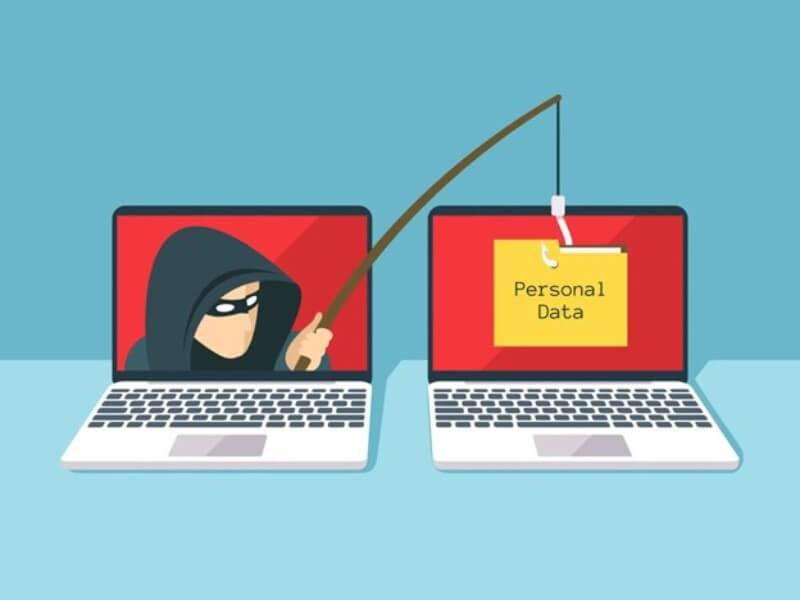The desire to earn without titanic efforts puts many people at risk. At first glance, making a profit through operations with digital assets, participating in promotional campaigns of online companies, shopping in marketplaces, and accepting exclusive personal financial offers seems like a real strategy and beneficial interaction. But registering on suspicious platforms, phishing, and fake websites can be extremely dangerous and at any moment such cooperation may leave you without means of subsistence.
As fraudulent attacks have recently progressed in terms of process development and improvement, the methods of deception reach different configurations. To know how not to fall for a fake website, you should be aware of common schemes and popular scams. Knowledge of the most commonly used types of phishing can become a kind of reservation against capital loss, as recognizing the actions of fraudsters will provide an understanding of what steps to take to avoid falling into a trap.
“Happy Letters” from Scammers
Email phishing is one of the most common, which can be carried out through letters sent to email or even via SMS. It is possible that scammers may also operate over the phone. As for messages, charlatans send them, urgently asking to take action. For example, an email appears to come from a well-known bank, of which the recipient is a client, stating that they should promptly update their account information to avoid future problems.

Since the letter looks quite real, a person, out of ignorance, may actually share personal information and send confidential data by clicking on the link provided in the letter. Thus, the recipient gains access to passwords and credit card funds, which can be used for their own nefarious purposes.
Phishing Attacks and Online Safety
Posing as a legitimate member of a bank team or another financial structure, fraudsters lure naive and trusting people to a fake website, where they carefully use special psychological tricks to coerce them into entering confidential data.

A well-thought-out fictional mask by scammers combined with the urgency of actions allows them to collect valuable information quickly, leaving the victim in complete misunderstanding of the scheme being executed at that time. Such attacks are a common occurrence and the security when disclosing information to scammers in this situation is practically non-existent.
Signs of a Phishing Site
Attempts at financial fraud and actions resulting in the theft of passwords and bank account numbers are often successful. But if you "turn on" maximum attentiveness, phishing and fake websites can be recognized.
Deceptive messages often come from familiar online platforms, and they are composed in a text as closely as possible, making it difficult to find differences with the naked eye. The sources of mailings use similar email addresses as the original company, but there may be only a letter or symbol different. There are common signs of a phishing site that can help identify fraudsters:
- unexpectedness – messages may arrive at non-working hours;
- unknown address, but in the letter from the name of a real online market or government structure, they may ask to confirm the account for subsequent use of the bonus program;
- income options – quick earnings are offered or notified about winning a lottery;
- banal text – after a standard greeting, scammers may write: "Urgent message from the credit organization" or "Account blocked";
- presence of errors in the letter text;
- deceptive URL and fake QR code.
By studying the details and demonstrating vigilance and caution in actions, you can protect yourself from phishing attempts. Do not rush and immediately respond to the sender. It is important to correlate the information and adhere to certain rules.
How to Protect Yourself from Phishing
Regardless of whether you are trying to participate in various online programs for the first time or are already a confident user, no one is immune from losing funds. How not to fall for a fake website and protect yourself from phishing?
There are several rules that should be followed to avoid negative situations:

1. Do not open suspicious letters, especially if the subject line mentions a large win or participation in a lottery; 2. Do not download dubious files from sent messages, and it is also not recommended to click on links sent by strangers; 3. If a letter is received discussing the appointment of social benefits or another payment, do not rush – it is better to verify the information with the appropriate official agencies and departments; 4. It is imperative to check the address bar of the website where you are asked to enter confidential information. The name of the fake web resource may differ from the original site of the real company by only one or two characters;

5. Do not enter bank codes and credit card details on suspicious sites; 6. Presence of spelling and grammatical errors, a strange unattractive design of the electronic notification – a sign of a fake letter; 7. It is very important to check the QR code, the organization's details where payment needs to be made, as well as other data that opened after scanning the code. A mandatory nuance: the information should match the original financial data of the real company whose services need to be paid.
It is also important to protect data from online fraudsters. Timely password changes can protect information from fraudster actions and become a serious barrier to overcome. If you cannot update the data yourself or find it difficult to come up with a unique combination, you can use online generators available on the internet. And one more recommendation that not everyone follows – do not follow scammers' instructions and install applications as instructed through a phone call – this can be fraught with loss of funds.
